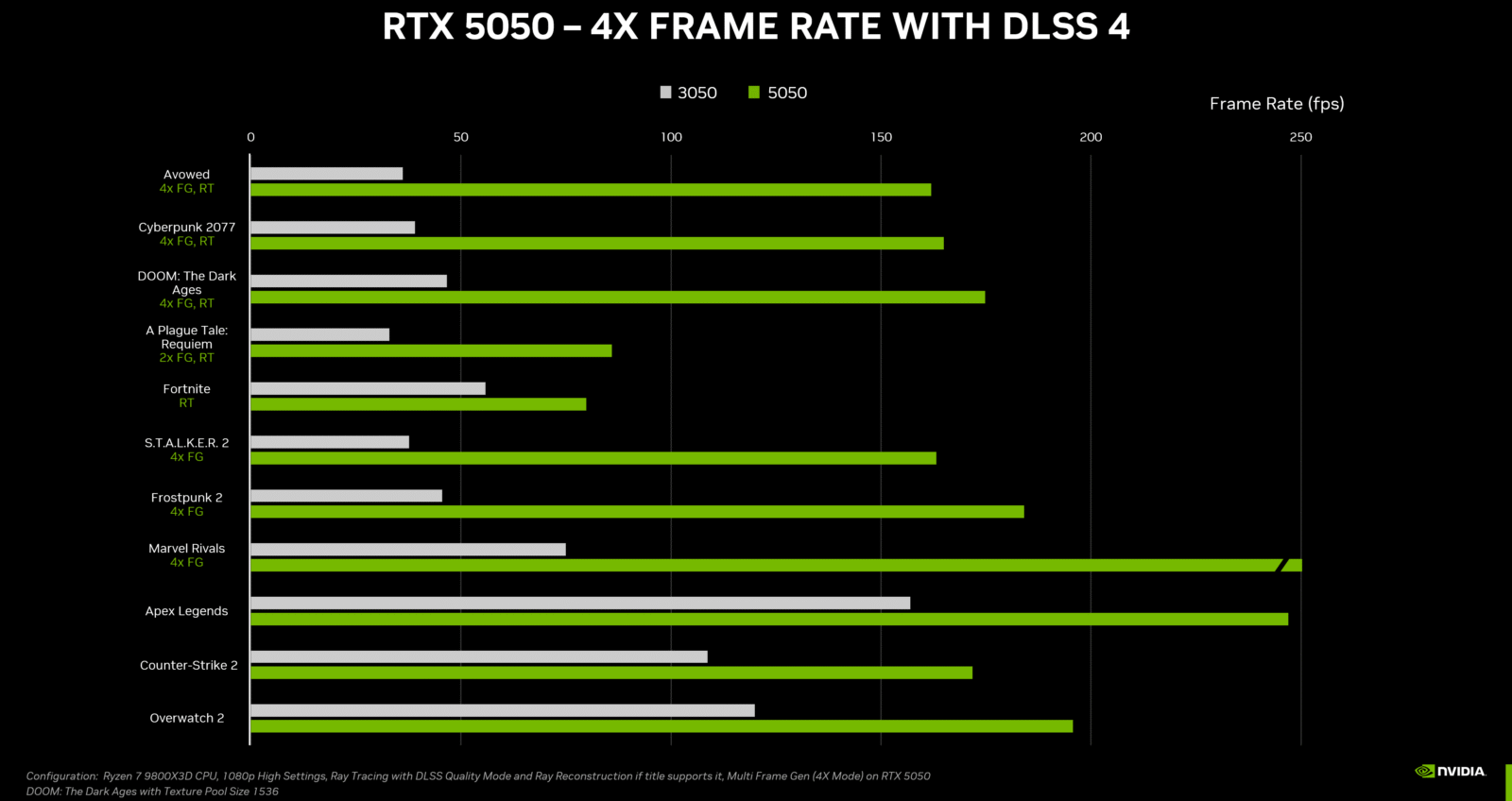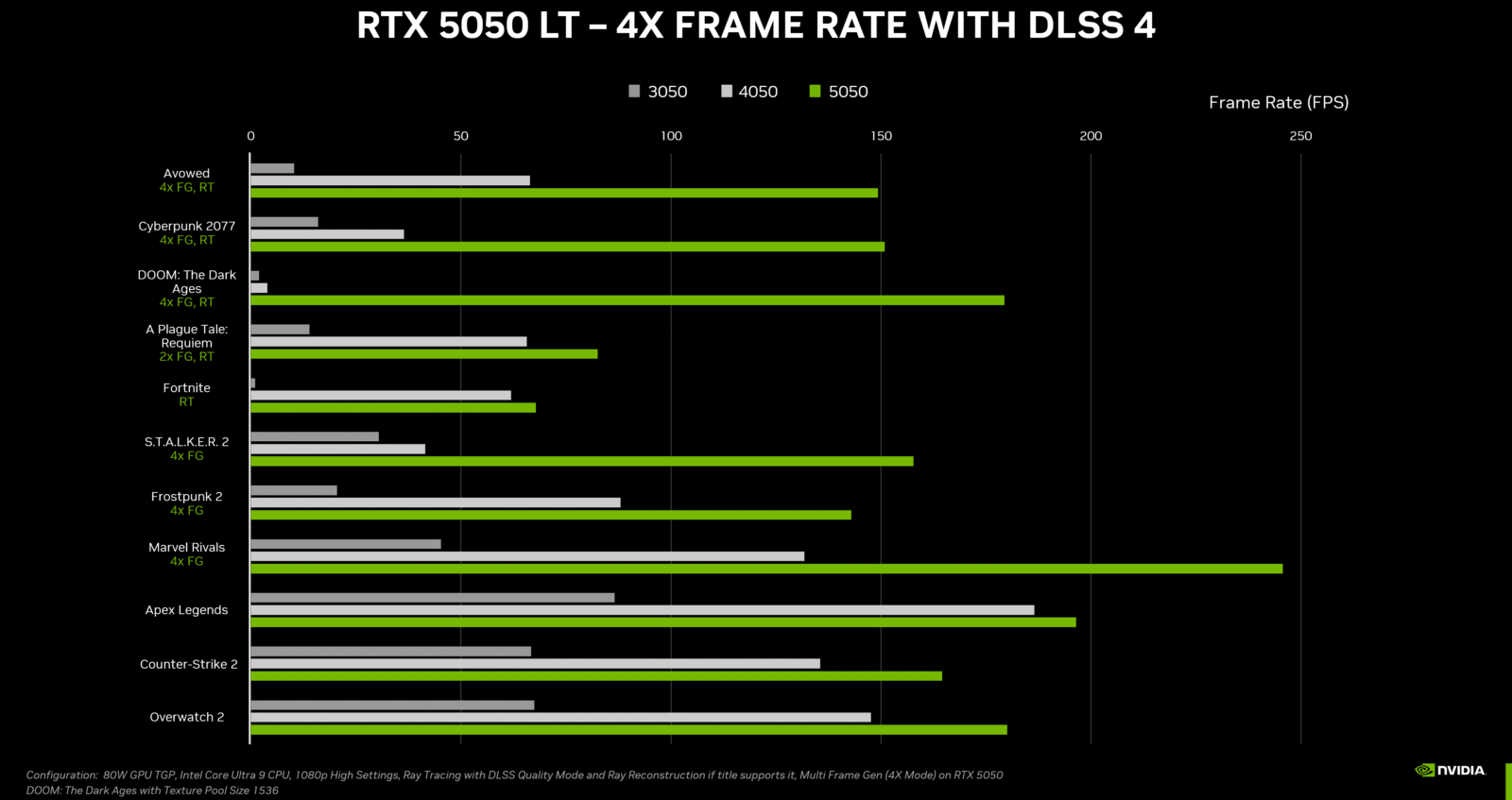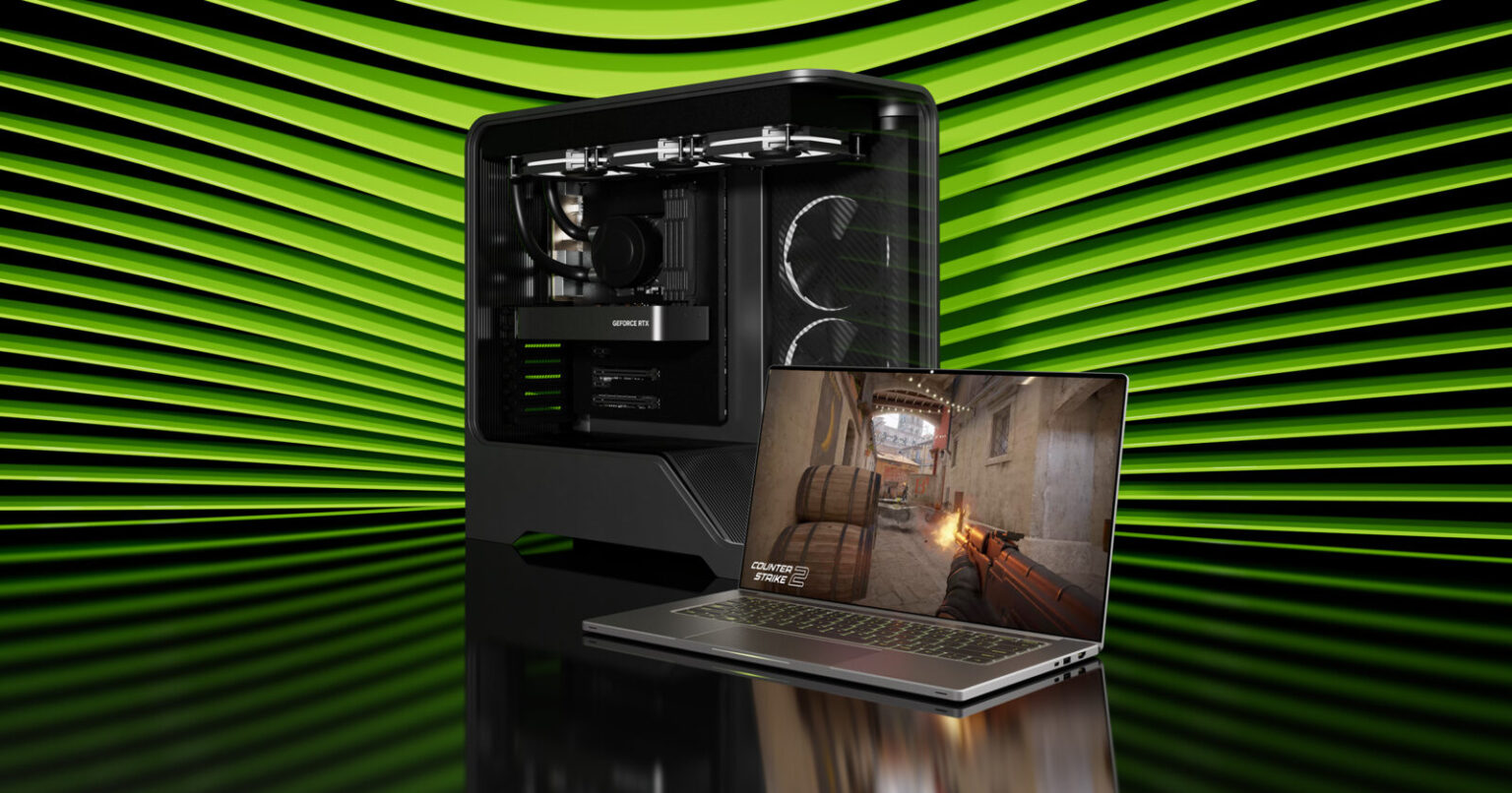Nvidia has officially introduced the GeForce RTX 5050, marking the entry-level point for its RTX 50-series lineup and bringing the latest Blackwell architecture to a broader audience. Priced at $249, this is Nvidia’s most affordable Blackwell GPU, aimed at budget-conscious gamers looking for modern features without the premium price tag.
The desktop RTX 5050 includes 2,560 CUDA cores, 8GB of GDDR6 memory on a 128-bit interface, and a 130W TGP requiring a 6- or 8-pin power connector. Clock speeds boost up to 2,570MHz, with board partner models likely to push those numbers further. Although it mirrors several specifications of the earlier RTX 3050, including core count and memory size, Nvidia claims a 60% performance improvement in traditional rasterization workloads thanks to architectural upgrades.

A key new addition is support for DLSS 4 with Multi-Frame Generation and Ray Reconstruction. These AI-powered features aim to improve both frame rates and visual quality, especially in ray-traced environments. That said, real-world benefits may vary. On lower-end cards like the 5050, the impact of DLSS 4 could be inconsistent, with performance gains often dependent on developer implementation and game compatibility.
While this release fills the void left by the absence of an RTX 4050 desktop GPU, its similarities to the 3050 raise questions about overall value. For around $50 more, the RTX 5060 offers significantly better specs, including 50% more CUDA cores and faster GDDR7 memory.
Nvidia has not released a Founders Edition for the RTX 5050, but major brands like Asus, MSI, Gigabyte, and Zotac will offer custom models. The desktop version is set to launch in the second half of July and will also be available in pre-built systems from system integrators.

A mobile version of the GPU is available now in laptops starting at $999. These GeForce RTX 5050 Laptop GPUs share the same core configuration as the desktop model but come with 8GB of GDDR7 memory, offering improved efficiency and enabling slimmer, quieter devices. Nvidia claims these laptops deliver up to 2.4x better raster performance and over 4x gains in DLSS-enhanced gaming versus the RTX 3050 Laptop GPU.

Altogether, the RTX 5050 brings DLSS 4, Blackwell architecture, and modern GPU features to a new baseline, appealing to upgraders from older Pascal, Turing, or Ampere cards. While it won’t match the performance of the higher-tier 5060, it introduces the latest Nvidia ecosystem to budget gaming PCs and thin-and-light laptops.





